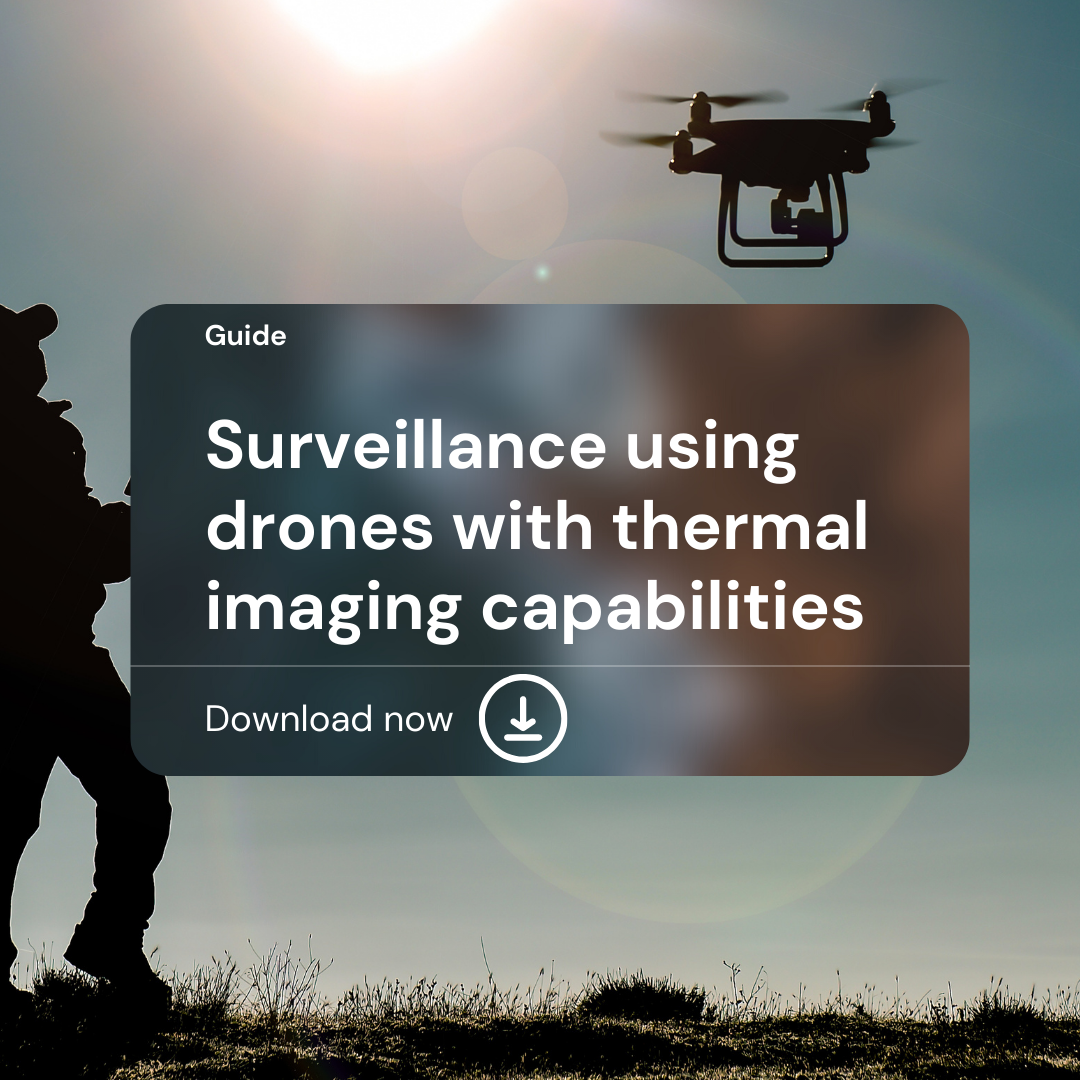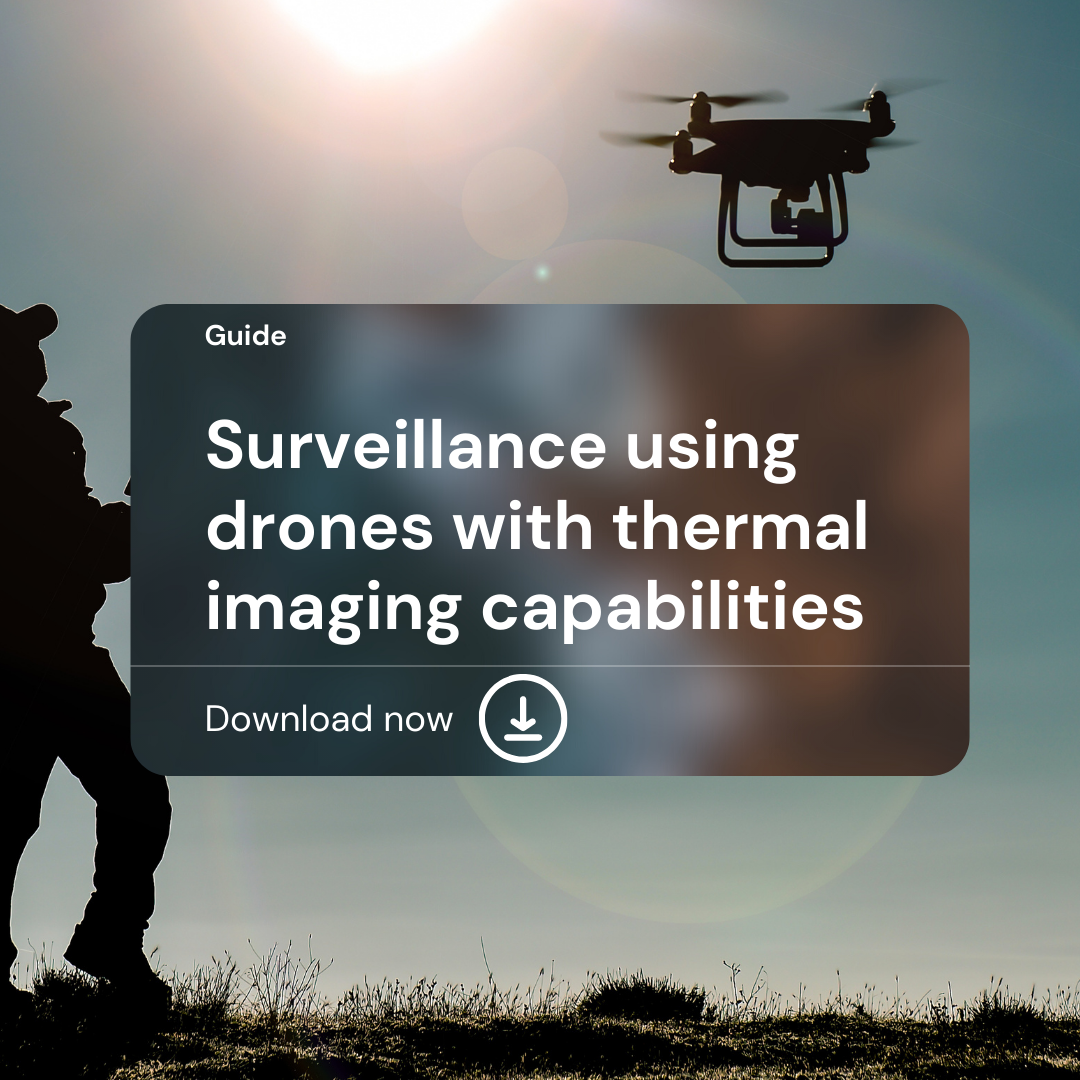Drones have become a game-changer for surveillance applications. Fitted with lightweight and compact infrared detectors, drones have taken the surveillance capabilities of fixed infrared cameras to a whole new level by bringing mobility and portability to the mix. Drones have been adopted by a number of professional users, including military forces, surveillance operators, thermography practitioners and the leisure industry, and they clearly set the performance bar high, especially when it comes to power use and flying time. They also boast long-range observation capacities, which have cemented their reputation as unrivalled surveillance devices.
Medium-altitude thermal drones have brought mobile surveillance operations into the mainstream. In this article, we explain three reasons for choosing a mobile surveillance device, as well as the different types of applications covered.
- Ensure easy access to hard-to-reach areas
Surveillance drones that are capable of flying at medium altitudes provide easy access to potentially dangerous areas and/or zones that humans would otherwise be unable to reach without the use of specialized equipment. Prime examples include mountainous regions, isolated areas and sensitive sites, such as nuclear power plants. They can gather invaluable data and images, which makes everyday work so much easier for the maintenance or surveillance teams controlling them from a distance.
With their easy maneuverability, space-saving size and leading-edge performance when fitted with suitable infrared sensors, i.e. lightweight and compact sensors with a lower power draw, drones play a mission-critical role in improving safety and security in sensitive areas, both during the day and at night.
Examples of real-life applications:
- Using drones to keep a close eye on high-voltage power lines, transmission towers and electric power plants can help prevent production from grinding to a standstill.
- Inspecting huge structures, such as hydroelectric dams, can be a hazardous exercise due to the height of the structure and the sheer force and volume of the water cascading down the dam walls.
- Detecting heat losses in buildings or pinpointing incidents in solar panels.
- Locating failures in electrical transportation and production facilities.
If you would like to know more about the surveillance drone market, download our free guide below.

- Extend the boundaries of the surveillance zone
Using a mobile surveillance device, such as a drone, can broaden the range of any areas under the watchful eye of a fixed camera. In other words, drones can significantly widen the surveillance zone.
Drones can view objects from several different angles and draw closer to any targets that seem to be acting suspiciously or exhibiting unusual behavior. Surveillance operators can harness the drone's mobility to cast their net ever further and wider, while targeting objects with superior accuracy.
In addition, they can overcome even the most complex terrain, such as steep inclines, slopes and valleys that could cut off a fixed camera's visibility.
Finally, mobile surveillance devices are capable of observing and tracking moving targets.
Examples of real-life applications:
- Drone-based search and rescue missions over wide open areas.
- Surveillance of sprawling and sensitive sites or facilities, such as borders.
- Ensure areas are safe before teams are dispatched
Drones can scout out sensitive areas and determine whether a given zone is safe. Their speed can help surveillance teams deliver an even faster response in the event of an incident.
Drones do not require any fixed installations and can instantly adapt to any surveillance area according to requirements.
Examples:
- Helping firefighters check for fire outbreaks or determine whether there are any remaining hotspots after a fire.
- Allowing officers to secure combat zones before sending in the ground troops.
- Allowing coast guards to scan the sea's surface for any objects or human presence before dispatching their teams.
Delivering the ultimate in mobility with a lightweight design and extended flying times, drones bring unrivalled flexibility to surveillance missions and are capable of adapting to a wide range of situations. That explains why their popularity continues to rise among professional users and the military. Many sectors of activity are taking a growing interest in drones with their ability to stream information in real time, their rapid deployment and their mission-ready capabilities. Another strong selling point is that manufacturers continue to develop ever sophisticated infrared sensors that can be fitted to drones.
The bottom line is that the surveillance drone market is racing forward. For more insights into this topic, download our free guide below.












